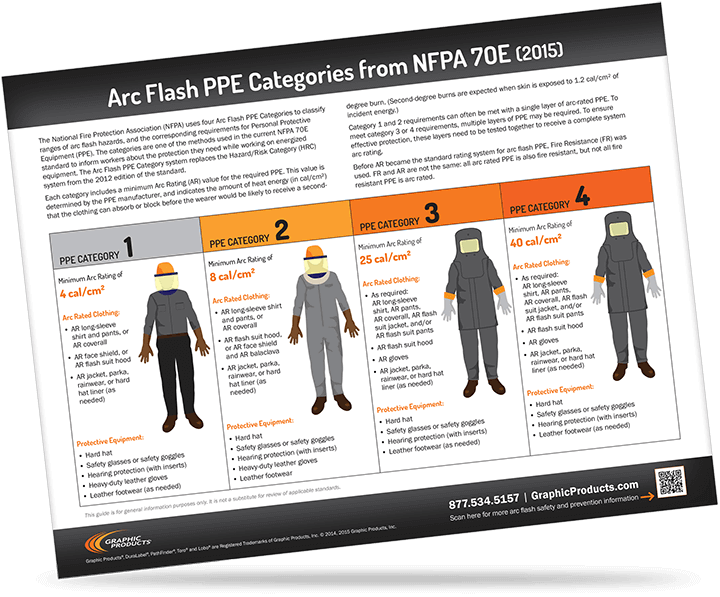Last Line of Defense
03
February,
2023
2 MINUTE READ

Creating a safe environment involves encouraging good practices. Reinforcing safety messages in your monthly safety meetings and training videos help contribute to a safety-oriented work culture.

Eventually, these messages soak in and create good habits with your workforce, so that each time they step onto a job site they're protected by their own good practices, whether you are there to enforce it.
Personal protective equipment (PPE) is their last line of defense ? but flame retardant coveralls only work if workers put them on before approaching the electrical circuit.
When in doubt, consult the experts. Every three years, the National Fire Protection Association releases a new edition of NFPA 70E, the standard which helps companies and employees prevent workplace injuries and fatalities due to electric shock and/or arc flash.
The tenth edition of the standard was released in 2015, and it completely overhauled arc flash PPE requirements. The five Hazard/Risk Categories (HRCs), which was introduced in 2012, have been replaced with four arc flash PPE categories. While it may seem confusing at first, the four-category system actually simplifies the process of building an electrical safety PPE list for workers.
Each of the four categories describes a range of arc flash hazards and the minimum arc rating (AR) value for the required PPE. The AR value is determined by the manufacturer, and indicates the amount of heat energy (in cal/cm?) that the clothing can absorb or block before the wearer receives second-degree burns.
The four arc flash PPE categories include:
- PPE Category 1: Minimum arc rating of 4 cal/ cm2
- Arc rated clothing: long-sleeve shirt and pants or coveralls, face shield, flash suit hood, jacket, parka, rain wear, hard hat liner
- Protective equipment: hard hat, safety glasses or goggles, hearing protection, heavy-duty leather gloves, leather footwear
- PPE Category 2: Minimum arc rating of 8 cal/cm2
- Arc rated clothing: long-sleeve shirt and pants or coveralls, AR flash suit hood, face shield or balaclava, jacket, parka, rain wear, hard hat liner
- Protective equipment: hard hat, safety glasses or goggles, hearing protection, heavy-duty leather gloves, leather footwear
- PPE Category 3: Minimum arc rating of 25 cal/cm2
- Arc rated clothing: long-sleeve shirt, pants or coveralls, AR flash suit jacket and/or AR flash suit pants, flash suit hood, gloves, jacket, parka, rain wear, hardhat liner
- Protective equipment: hard hat, safety glasses or goggles, hearing protection, leather footwear
- PPE Category 4: Minimum arc rating of 40 cal/cm2
- Arc rated clothing: long sleeve shirt, pants, overalls, AR flash suit jacket and/or flash suit pants, AR flash suit hood, gloves, jacket, parka, rain wear, hard hat liner
- Protective equipment: hard hat, safety glasses or goggles, hearing protection, leather footwear
Most day-to-day work with electricity and energized equipment only requires clothing that meets category 1 or 2 protection requirements, but accidents in categories 3 and 4 are potentially life-changing or fatal. Creating a safety culture doesn't end with posting PPE requirements and making appropriate equipment available to all employees. To instill safe habits in employees requires frequent reminders via safety labels and signs, discussions in safety meetings, and possibly even disciplinary action.
Availability of PPE doesn't save worker lives: using it does. Compliance is not satisfied by having an AR flash suit jacket in a cabinet near electrical equipment; it mandates that an employee use it. Those in a safety management role often have to take a tough stance with employees that make excuses rather than suiting up when appropriate, but this attitude pays off when employees go home at the end of each work day.
RELATED RESOURCES
Injury Tracking App Launched
OSHA's web portal to accept injury reports went live Aug. 1, but the site repeatedly has had technical ...
Read
Is Your Facility Fit for the Future?
Can your company keep up with the future demands of manufacturing, distribution, and e-commerce? Technology ...
Read
Generating Quality Leads in Manufacturing
Finding the right leads for your business can be time-consuming and, sometimes, lead to nowhere. ...
Read.png)


